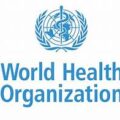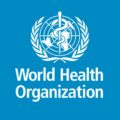Causes of death can be grouped into three categories: communicable (infectious and parasitic diseases and maternal, perinatal and nutritional conditions), noncommunicable (chronic) and injuries.
Leading causes of death globally
At a global level, 7 of the 10 leading causes of deaths in 2019 were noncommunicable diseases. These seven causes accounted for 44% of all deaths or 80% of the top 10. However, all noncommunicable diseases together accounted for 74% of deaths globally in 2019.
The world’s biggest killer is ischaemic heart disease, responsible for 16% of the world’s total deaths. Since 2000, the largest increase in deaths has been for this disease, rising by more than 2 million to 8.9 million deaths in 2019. Stroke and chronic obstructive pulmonary disease are the 2nd and 3rd leading causes of death, responsible for approximately 11% and 6% of total deaths respectively.
Lower respiratory infections remained the world’s most deadly communicable disease, ranked as the 4th leading cause of death. However, the number of deaths has gone down substantially: in 2019 it claimed 2.6 million lives, 460 000 fewer than in 2000.
Neonatal conditions are ranked 5th. However, deaths from neonatal conditions are one of the categories for which the global decrease in deaths in absolute numbers over the past two decades has been the greatest: these conditions killed 2 million newborns and young children in 2019, 1.2 million fewer than in 2000.
Deaths from noncommunicable diseases are on the rise. Trachea, bronchus and lung cancers deaths have risen from 1.2 million to 1.8 million and are now ranked 6th among leading causes of death.
In 2019, Alzheimer’s disease and other forms of dementia ranked as the 7th leading cause of death. Women are disproportionately affected. Globally, 65% of deaths from Alzheimer’s and other forms of dementia are women.
One of the largest declines in the number of deaths is from diarrhoeal diseases, with global deaths falling from 2.6 million in 2000 to 1.5 million in 2019.
Diabetes has entered the top 10 causes of death, following a significant percentage increase of 70% since 2000. Diabetes is also responsible for the largest rise in male deaths among the top 10, with an 80% increase since 2000.
Other diseases which were among the top 10 causes of death in 2000 are no longer on the list. HIV/AIDS is one of them. Deaths from HIV/AIDS have fallen by 51% during the last 20 years, moving from the world’s 8th leading cause of death in 2000 to the 19th in 2019.
Kidney diseases have risen from the world’s 13th leading cause of death to the 10th. Mortality has increased from 813 000 in 2000 to 1.3 million in 2019.
Leading causes of death by income group
The World Bank classifies the world’s economies into four income groups – based on gross national income – low, lower-middle, upper-middle and high.
People living in a low-income country are far more likely to die of a communicable disease than a noncommunicable disease. Despite the global decline, six of the top 10 causes of death in low-income countries are communicable diseases.
Malaria, tuberculosis and HIV/AIDS all remain in the top 10. However, all three are falling significantly. The biggest decrease among the top 10 deaths in this group has been for HIV/AIDS, with 59% fewer deaths in 2019 than in 2000, or 161 000 and 395 000 respectively.
Diarrhoeal diseases are more significant as a cause of death in low-income countries: they rank in the top 5 causes of death for this income category. Nonetheless, diarrhoeal diseases are decreasing in low-income countries, representing the second biggest decrease in fatalities among the top 10 (231 000 fewer deaths).
Deaths due to chronic obstructive pulmonary disease are particularly infrequent in low-income countries compared to other income groups. It does not appear in the top 10 for low-income countries yet ranks in the top 5 for all other income groups.
Lower-middle-income countries have the most disparate top 10 causes of death: five noncommunicable, four communicable, and one injury. Diabetes is a rising cause of death in this income group: it has moved from the 15th to 9th leading cause of death and the number of deaths from this disease has nearly doubled since 2000.
As a top 10 cause of death in this income group, diarrhoeal diseases remain a significant challenge. However, this category of diseases represents the biggest decrease in absolute deaths, falling from 1.9 million to 1.1 million between 2000 and 2019. The biggest increase in absolute deaths is from ischaemic heart disease, rising by more than 1 million to 3.1 million since 2000. HIV/AIDS has seen the biggest decrease in rank among the previous top 10 causes of death in 2000, moving from 8th to 15th.
In upper-middle-income countries, there has been a notable rise in deaths from lung cancer, which have increased by 411 000; more than double the increase in deaths of all three other income groups combined. In addition, stomach cancer features highly in upper-middle-income countries compared to the other income groups, remaining the only group with this disease in the top 10 causes of death.
One of the biggest decreases in terms of absolute number of deaths is for chronic obstructive pulmonary disease, which has fallen by nearly 264 000 to 1.3 million deaths. However, deaths from ischaemic heart disease have increased by more than 1.2 million, the largest rise in any income group in terms of absolute number of deaths from this cause.
There is only one communicable disease (lower respiratory infections) in the top 10 causes of death for upper-middle-income countries. Notably, there has been a 31% fall in deaths from suicide since 2000 in this income category, decreasing to 234 000 deaths in 2019.
In high-income countries, deaths are increasing for all top 10 diseases except two. Ischaemic heart disease and stroke are the only causes of death in the top 10 for which the total numbers have gone down between 2000 and 2019, by 16% (or 327 000 deaths) and by 21% (or 205 000 deaths) respectively. High-income is the only category of income group in which there have been decreasing numbers of deaths from these two diseases. Nonetheless ischaemic heart disease and stroke have remained in the top three causes of death for this income category, with a combined total of over 2.5 million fatalities in 2019. In addition, deaths from hypertensive heart disease are rising. Reflecting a global trend, this disease has risen from the 18th leading cause of death to the 9th.
Deaths due to Alzheimer’s disease and other dementias have increased, overtaking stroke to become the second leading cause in high-income countries, and being responsible for the deaths of 814 000 people in 2019. And, as with upper-middle-income countries, only one communicable disease, lower respiratory infections, appears in the top 10 causes of death.
Why do we need to know the reasons people die?
It is important to know why people die to improve how people live. Measuring how many people die each year helps to assess the effectiveness of our health systems and direct resources to where they are needed most. For example, mortality data can help focus activities and resource allocation among sectors such as transportation, food and agriculture, and the environment as well as health.
COVID-19 has highlighted the importance for countries to invest in civil registration and vital statistics systems to allow daily counting of deaths, and direct prevention and treatment efforts. It has also revealed inherent fragmentation in data collection systems in most low-income countries, where policy-makers still do not know with confidence how many people die and of what causes.
To address this critical gap, WHO has partnered with global actors to launch Revealing the Toll of COVID-19: Technical Package for Rapid Mortality Surveillance and Epidemic Response. By providing the tools and guidance for rapid mortality surveillance, countries can collect data on total number of deaths by day, week, sex, age and location, thus enabling health leaders to trigger more timely efforts for improvements to health.
Furthermore, the World Health Organization develops standards and best practices for data collection, processing and synthesis through the consolidated and improved International Classification of Diseases (ICD-11) – a digital platform that facilitates reporting of timely and accurate data for causes of death for countries to routinely generate and use health information that conforms to international standards.
The routine collection and analysis of high-quality data on deaths and causes of death, as well as data on disability, disaggregated by age, sex and geographic location, is essential for improving health and reducing deaths and disability across the world.





